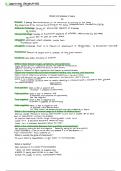Summary
Summary PHAR121 Module 1 Full Review
- Course
- PHAR 121 (PHAR121)
- Institution
- University Of Saskatchewan (USask )
This summary includes all of the material learned in PHAR 121 with questions and answers. Use it to review concepts or to quiz yourself using active recall.
[Show more]



